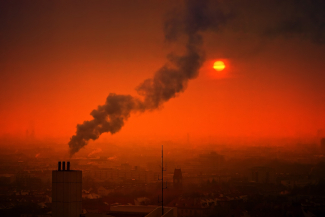FILTER
Displaying 271 - 280 of 1126 publications
Although the resource curse offers evidence for the national crowding out generated by resource windfalls from mining, subnational crowding is not fully understood. This knowledge gap is problematic…
| Peer Reviewed | ChileAbstract Policymakers and utility managers can use a variety of tariff structures to calculate customers' bills for water and sanitation services, ranging from a simple fixed monthly fee to…
| Peer Reviewed | KenyaChile’s extended allocation of marine user rights aims to reduce overextraction of marine resources. New user rights promote small-scale aquaculture both to increase coastal incomes and to encourage…
| Peer Reviewed | ChileEconomists argue that carbon taxation (and more generally carbon pricing) is the single most powerful way to combat climate change. Since this is so controversial, we need to explain it better, and to…
| Peer Reviewed | Colombia, SwedenUniform regional development is a challenge in low-income and emerging countries, making the role of financial systems to promote new business, investment, entrepreneurship, and growth particularly…
| Peer Reviewed | ChileAbstract Cultural norms diverge substantially across societies, often within the same country. We propose and investigate a self-domestication/selective migration hypothesis, proposing that cultural…
| Peer Reviewed | VietnamThis paper determines the socioeconomic and physical characteristics that influence maize farmer’s choice of land ownership systems in Tanzania, i.e., owned, sharecropped, and rented title land. The…
| Peer Reviewed | TanzaniaWe estimate the causal effects of retirement on health services utilization in Vietnam. Using authorized retirement ages as instruments for exogenous changes in retirement, we find positive and strong…
| Peer Reviewed | VietnamAbstract Considering rapid urbanization worldwide, the concern is growing that the resulting loss of green space affects welfare negatively. This study assesses how implicit prices of green amenities…
| Peer Reviewed | SwedenSignificance Approximately 70% of China’s rivers and lakes are unsafe for human use. Effective implementation of existing pollution standards can improve the health and well-being of people across…
| Peer Reviewed | China

